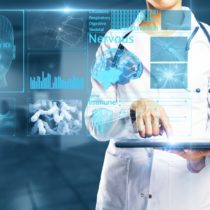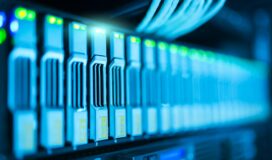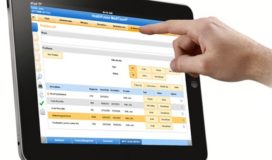
Healthcare Information Technology Trends in 2022
We have already discovered some of the health it trends in 2020. What do you think can expect us in 2022? Let’s try to guess some healthcare information technology trends that might appear in 2022.
According to certain statistics, almost 80% of healthcare providers expect to boost their investments in health IT within the next decade. The overall objectives are clear, but what techniques are appropriate for investments? The answer to this question can be found in some reviews of medical advancements in 2022.
Healthcare Market in 2022
In 2022-2023, the healthcare IT market will continue to grow. According to the recent “Future of Healthcare Report“, more than 50 per cent of questioned consumers are interested in relying on Telehealth solutions. What are the major trends in healthcare industry in 2022 and beyond?
They value the performance and pricing rates of these Health IT services more than anything else. As a result, medical practitioners are looking for innovative tools to meet the requirement and deliver appropriate results to their customers.
Experts evaluate the Internet of Medical Things (IoMT), remote patient monitoring (RPM), virtual reality (VR), augmented reality (AR), and Big Data processing as innovative e-health solutions that already fulfill customer requirements on the industry. These tools have proven their efficacy in transforming the global online health environment by passing the pandemic challenge.
Artificial Intelligence (AI) and Machine Learning (ML) techniques are poised to enhance their leadership roles in the coming years. They are the most effective in terms of meeting individual needs. They can help healthcare businesses with administration and analysis, as well as evaluation.
Internet of Medical Things and Wearables
The demand for distant healthcare has grown as a result of COVID-19. Experts realized how critical it is to create connectivity solutions that allow physicians to communicate with their patients from anywhere. The Internet of Medical Things (IoMT) is a promising field from this point of view.
Using specific gadgets, it is now possible to keep an eye on patients without weekly visits to the doctor’s office. It is sufficient to have a decent internet connection.
Inhalers, modern smart mattresses, EKG, and ECG devices, for example, make various operations such as data interchange with telemedicine software easier. There are various advantages to using these systems for telemedicine. For example, they improve workflow, increase patient mobility, and allow for the monitoring of health issues.
Remote Patient Monitoring (RPM) in 2022
COVID-19 also aided in the development of remote patient monitoring as a permanent medical trend. Online consultations, online therapy, and teleconferencing are all examples of virtual healthcare’s growing popularity. RPM has even more options thanks to the large range of IoMT devices available.
Hands-free interaction will be one of the biggest notable technology advancements in sales cycle management in the long term. That’s because RPM helps medical businesses of all sizes reduce time and money expenses.
In the future, achieving RPM will allow for the combination of hands-free and on-site procedures to give the appropriate service appearance for various patient groups.
Augmented Reality
Researchers can improve telemedicine systems by merging online telemedicine services with augmented reality (AR). They can improve the precision of a variety of procedures. For example, AR can help with patient transportation.
Different types of healthcare services may necessitate different levels of experience. Customized applications are already helpful in the identification of treatment options for individuals.
Augmented reality solutions include smart eyewear, dental instruments, and vein sensors, to name a few. Other AR tools allow doctors to project their fingers into the display of an AR-enabled surgeon on-site, receive instructions during operations, view 3D models, and far more.
Virtual Reality
In the near future, existing health IT innovations such as augmented reality (AR) and virtual reality (VR) will discover even more implementations. The VR technology can be used to enhance a variety of hospital tasks, both on-site and electronically.
Surgical training, teaching clinical students using real-case simulations, and creating virtual hospital experiences are all instances of VR usage in health.
Furthermore, the method has the potential to enhance the quality of lung scanning, perhaps saving countless people in the fight against Coronavirus.
Overall, we’ve come to regard virtual reality as a cool technology. However, its influence on healthcare is more beneficial than amusing.
Big Data and Artificial Intelligence
Even more innovations can be used to maximize the productivity of telemedicine systems. Advanced telemedicine technologies include artificial intelligence in telehealth and big-data analysis. They’re both excellent add-ons because they can collect, analyze, and assess massive amounts of data, resulting in way much better patient’s treatment suggestions.
In a medical context, the large proportion of patients have come across AI in some form. For example, chatbots for client support and therapy are powered by this technology.
Artificial intelligence has the potential to enhance productivity of healthcare service and yield improved outcome. Symptoms, social status, characteristics, age, and other aspects that may affect treatment can all be detected using AI, machine learning, and big data. Having this type of data allows you to make data-driven choices.
It’s no surprise that the usage of AI in healthcare industry is expected to grow rapidly in the next years.
Summary
Because of the COVID-19 outbreak, medical personnel must fully comply with new regulations and develop creative approaches, according to healthcare industry trends for 2022 and then beyond. The demand for its products increased dramatically. Medical practitioners must employ the most up-to-date technology and a variety of apps.
On a daily basis, new tools in different areas including healthcare training, remote monitoring, pharmaceutical research, and AI-assisted diagnosis methods emerge. New legislation and rules should also be addressed, not just software production.
Numerous potential to improve the current medical system will be possible by these technological advancements.
Health IT



